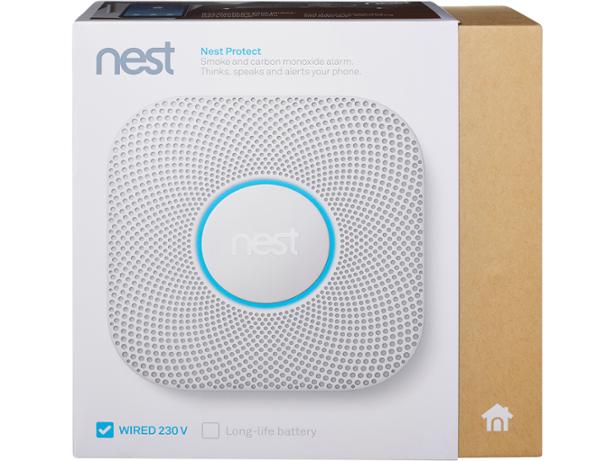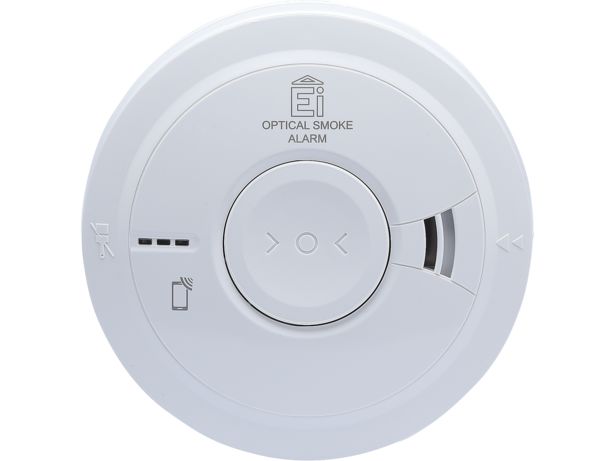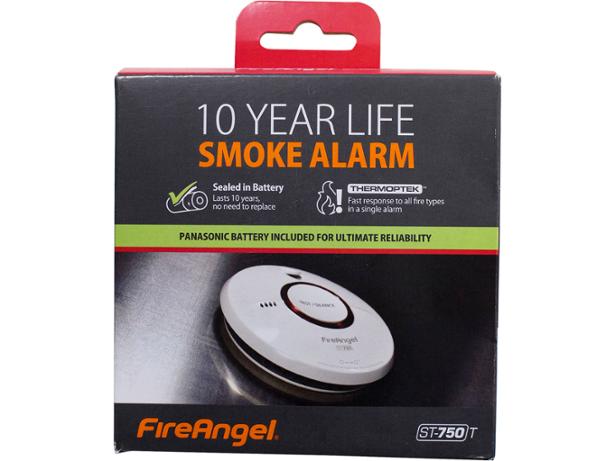How to place and maintain smoke alarms

In this article
- What are the right smoke alarms and heat alarms for each room?
- What do the smoke alarm and heat alarm 2022 law changes in Scotland mean for me?
- Where should I place smoke alarms?
- Tips for buying, installing and maintaining smoke alarms
- What maintenance do my smoke detectors need?
- How often should I check my smoke alarm?
- My smoke alarm is beeping or chirping, what do I do?
Looking for the best smoke alarm? Skip straight to our full smoke alarm reviews for our Best Buy recommendations.
At Which? we lab test smoke alarms to uncover the models that you can trust. Our reviews tell you the ones that respond quickly enough to all types of fire in British Standards tests, and the smoke alarms that can't be relied on.
Here, we give you vital advice on choosing, positioning and maintaining your smoke alarms correctly, so they will alert you and your family when you really need them.
Take a look at our best smoke alarms to discover the models that Which? recommends, including smoke alarms that meet the requirements of the new smoke and heat alarms laws in Scotland.
What are the right smoke alarms and heat alarms for each room?
Depending on the size and layout of your home, a heat alarm in the kitchen and optical smoke alarms in the common areas of each floor could be adequate.
But in Scotland regulations are tighter – see 'What do the smoke alarm and heat alarm law changes in Scotland mean for me', below.
You could add another layer of protection by installing smoke alarms in every bedroom. This is a good idea, as studies have shown that sometimes children and older adults don't wake up when a smoke alarm on the landing goes off.
Interlinked smoke alarms could be a real advantage when there's a fire. These have become a requirement for all homes in Scotland since February 2022. If one alarm detects smoke, all the alarms sound.
Optical smoke alarms use infrared to detect smoke and are good for detecting slow burning electrical fires. Steam and smoke from cooking is less likely to trigger a false alarm making them a good choice for living rooms, dining rooms, halls and landings.
Ionisation alarms are known to react quickly to tiny particles in the air – the kind you might find in fast flaming house fires – and this can lead to false alarms if they're sited near a kitchen or an open window. So, it's best to fit them in other places around the house – bedrooms, lofts and offices would be good places for an ionisation alarm.
Find out which models from brands including FireAngel, Kidde and Ei Electronics have earned our Best Buy smoke alarm recommendations.

What do the smoke alarm and heat alarm 2022 law changes in Scotland mean for me?

The smoke alarm and heat alarm laws changed in February 2022. Since then, all homes in Scotland have needed to have interlinked smoke and heat alarms installed.
When one interlinked alarm senses danger – either smoke being detected by a smoke alarm or a heat alarm picking up rapidly rising temperatures – they will all sound.
Homes that have a fuel burning appliance, such as a boiler, an open fire or a log burner will also need to have a carbon monoxide (CO) alarm installed in the room the appliance is in, but the CO alarm doesn’t need to be interlinked.
The new law was introduced following the Grenfell fire in 2017, and its implementation has been delayed by a year because of the Covid pandemic.
The regulations state that all homes will need a smoke alarm to be installed in the most used room, which is likely to be the living room in most homes. And an interlinked heat alarm will need to be needed in the kitchen.
The new regulations also require interlinked smoke alarms to be fitted in all hallways and landings in homes in Scotland.
Interlinked smoke and heat alarms will need to be mains powered or come with a sealed battery rather than with replaceable batteries.
Where should I place smoke alarms?
To get the best response from your alarm, it should go in the centre of the ceiling and away from obstructions or dead spaces, such as where the walls and ceiling join.
You should be able to hear it clearly across the whole space it is intended to cover, so bear this in mind as you look around your home and consider the risks.
You should consider whether you think members of your family would hear an alarm in the planned position from key areas, such as their bedroom. Plus whether anyone has needs that would better suit a different configuration – for example, a hearing impairment or a particularly heavy sleeper.
Tips for buying, installing and maintaining smoke alarms
- Buy a Best Buy smoke alarm: this is the only way to guarantee that you'll end up with an alarm that's quickest to sound in an emergency
- In Scotland you will need to install interlinked smoke and heat alarms installed
- If you can't find a Best Buy, look for an alarm that's been tested to the BS EN 14604 standard – this will be shown on the box. But bear in mind that we've tested alarms that officially meet the standard, but that have failed our tests and that the standard is broad and allows slow-to-trigger alarms to pass
- Write on the smoke alarm itself the day that it was installed, and the date that it, or the battery, should be replaced
- Follow the manufacturer's guidance on the installation, location and maintenance of the alarm
- Above all, ensure that everyone in your home knows exactly what they should do in the event of a fire.

What maintenance do my smoke detectors need?
Smoke alarms need very little maintenance, but follow these simple steps to keep yours in good working order.
- Use the test button to test the smoke alarm's battery weekly
- Change the battery each year unless your alarm comes with a sealed battery with a fixed-life
- Gently vacuum inside the case (using the soft brush attachment) to remove dust from the smoke alarm sensors. If the case doesn't open, vacuum through the holes
- Sensors get less responsive over time, so replace your smoke alarms at the end of its lifetime.
How often should I check my smoke alarm?

Test your alarm every week and, unless it has a sealed battery with a fixed-life, change the battery annually.
We found that people aren’t checking their alarms as regularly as they should, with fewer than one in 20 Which? members checking their alarms regularly enough.
The London Fire Brigade recommends you should check your alarm weekly.
Just 4% of smoke-alarm owners told us that they run a weekly alarm check – which is recommended by the London Fire Brigade. Seven in 10 owners admitted to checking their alarms only every six months or even less frequently than that. And 2% of owners admitted to never checking their alarms at all.
With products like this – where being in working order is absolutely critical but impossible to tell – running a check every week is the best way you can make sure your smoke alarm is primed and ready to let you know when there’s a fire. So add a reminder to your calendar or phone.
My smoke alarm is beeping or chirping, what do I do?
Regular beeps or chirps are a sign that the battery needs to be replaced. More frequent beeps or chirps – around one every 30 seconds – are likely to be a sign that the alarm has reached the end of its life and signals the time to buy a new one.
Keep the instructions to hand, they'll help you to interpret the noises your alarm makes.
When you do need an alarm, make sure you get the best smoke alarm.


